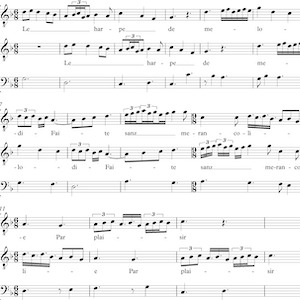Some reformulations and extensions of the theory of rhythmic canons

Accepted: November 27, 2024
HTML: 3
All claims expressed in this article are solely those of the authors and do not necessarily represent those of their affiliated organizations, or those of the publisher, the editors and the reviewers. Any product that may be evaluated in this article or claim that may be made by its manufacturer is not guaranteed or endorsed by the publisher.
The algebraic theory of periodic rhythmic canons was developed by the author of the present paper in connection with the study of a special class of rhythmic canons, nowadays referred as “Vuza canons”. A basic concept in the theory is the outer rhythm attached to a canon. In the original paper, for any given canon an auxiliary canon was constructed and the outer rhythm was expressed as an object attached to the latter canon. In the present paper we show that the outer rhythm can be expressed directly in terms of the given canon, without the need of an auxiliary construction. Strongly related to the outer rhythm is the canon category, which is a numerical measure of the periodic symmetry of the outer rhythm relative to the canon inner rhythm. We give a new definition of the category in terms of the stability groups associated to a canon. Many interesting results due to various authors have been obtained for Vuza canons, which by their definition must have maximal category. We show here that interesting facts can also be said about canons whose category is not maximal. We describe partitions of a canon into subcanons of minimal and maximal category and we discuss the relation between outer rhythm, category and a class of maps that can be regarded as natural morphisms between canons.
How to Cite

This work is licensed under a Creative Commons Attribution-NonCommercial 4.0 International License.
Copyright (c) 2024 The Author(s)
PAGEPress has chosen to apply the Creative Commons Attribution NonCommercial 4.0 International License (CC BY-NC 4.0) to all manuscripts to be published.

 https://doi.org/10.4081/peasa.51
https://doi.org/10.4081/peasa.51



